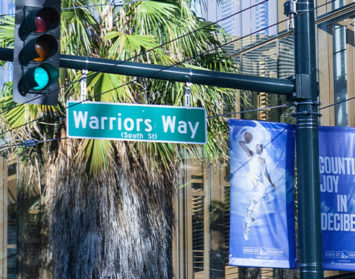It’s one week into the new year and, rather than try to make a lot of resolutions or predictions, I have a few questions for which I believe we need answers. This year.
Last year at this time, I suggested here that 2001 would be the “year of the tenant,” given all the “second-generation” office space coming on-line and the fact that San Diego was becoming home to many national and international companies — Sun Microsystems, Sony, Intel, BAE Systems, Cisco — and others. Not only would these firms be taking great quantities themselves but they would attract other companies to our sunny shores. A cooling economy, highlighted by the crash of the dot-coms and severe cutbacks in the technology industry, would precipitate the increased availability of the second-generation space as tenants began to shed vast quantities of leased space. Then, I became charitable and predicted that a softer market for landlords would result in building owners and property managers “honing their customer service skills” in 2001. Well, you can’t be right every time.
What remains true, however, is the destiny that downtown San Diego has on the entire region. Its importance grows every year. As downtown goes, so goes the region.
However, there are at least four areas where questions need answers if we are to optimize the development of downtown in a way that benefits all of us. Hopefully, they will inspire public comment — and ultimately, the appropriate review and action by our elected and appointed officials.
First, there’s the issue of parking revenues and facilities. It’s one thing to use up a roll of quarters for a routine meeting or appointment and, failing that, to pay fines that nearly equal an oil change and lube. But why is that so large a chunk of parking meter and ticket revenues do not stay downtown? My understanding is that 40 percent of the revenues generated by meters and fines stay downtown to be used to construct parking garage facilities. What about the larger portion — the 60 percent that apparently go elsewhere in the city’s coffers? Just asking.
Is anybody completely satisfied that we’re making speedy enough progress building additional parking garages in the right locations? It’s true that there are new structures opening, but are they coming on-line as fast as they need to — and in some cases, where they are needed?
For example, there was a report last month at a Centre City Development Corp. meeting that the second parking garage, Park It On Market-South may be postponed until 2003 because the first structure isn’t at full occupancy. Lest the casual observer think there’s no parking crisis, downtown’s critical parking needs are more centered in the core area — where the high concentration of office tenants are located.
For example, the now-existing parking lot behind the Downtown YMCA is envisioned as a seven-level parking garage that can accommodate several hundred vehicles — not the scant few that now occupy the lot. What’s happened to the plans for that project?
One can only wonder what additional parking facilities could be provided if a greater percentage — or even all — the parking revenues collected downtown stayed downtown. At the very least, the ratio should be reversed — 60 percent stays downtown, 40 percent goes wherever. It’s the common sense notion that monies collected in a specific area should be used to benefit that area. It isn’t downtown’s fault that there are no parking meters in Mission Valley or Rancho Bernardo.
Secondly, what do downtown’s dearth of properly located parking structures and the county’s Rideshare program have in common? The answer: A double negative impact to downtown San Diego’s business community.
The Rideshare requirement that all employers with 50 or more employees must facilitate the use of ride sharing or mass transit by their workers has not been enforced. The intent was to cut down the number of automobiles being driven to and from work, principally in the suburban locations. Meanwhile, downtown, as alluded to earlier, is not getting the parking facilities the area needs. Little wonder that employers who would be ideal downtown-based businesses are choosing instead to stay in the suburbs where their workers daily trundle the congested freeways and contribute more to air pollution.
What’s ironic is the fact that downtown already is well served by mass transit — its employers have the resources to comply with the spirit of the Rideshare program. We already have the San Diego Coaster train that daily brings hordes of North County “suits” and other workers downtown, as well as the San Diego Trolley that brings equal numbers of East and South County residents who work downtown. And yet there is still a great need for additional parking.
And, of course, no set of questions about the future or viability of downtown would be complete without visiting our city’s most litigious punching bag — the uncompleted and often-stalled ballpark. I’m not an attorney, but if ever there was a better example of frivolous law suits, I haven’t seen it.
My question is this: Assuming we cannot sue those who are filing these suits for malicious prosecution to recover some or all of the millions of dollars these suits have cost taxpayers, can we at least maintain enough public and political will to finish this downtown redevelopment anchor without needing the council to revote, revote again, revote yet again, and conduct marathon meetings where these civic gadflies can bask in their 15 minutes of fame?
The fourth question is more general; nevertheless, it is just as important to the future growth of our city as other more specific concerns. Will the increasing emphasis on regionalizing local government bode well or badly for San Diego, in particular its downtown core? There already are many players involved in land use, regional planning and controlling various civic amenities — primarily the city, the county, the Port District and Sandag. People are not always sure what the roles of the Port District and Sandag are. I don’t have any particular super-agency in mind when I wonder how a larger and most distant regional body will affect our ability to understand and control our civic destiny.
The answers to these and similar questions will help shape our economic and civic conditions this year. I intend to look at these and other issues in more detail in future columns throughout 2002.
At the expense of seeming melodramatic, we cannot afford to not have the answers to these and other questions 12 months from now.
Jason Hughes is founder of Hughes Marino, an award-winning commercial real estate company with offices across the nation. A pioneer in the field of tenant representation, Jason has exclusively represented tenants and buyers for more than 30 years. Contact Jason at 1-844-662-6635 or jason@hughesmarino.com to learn more.









